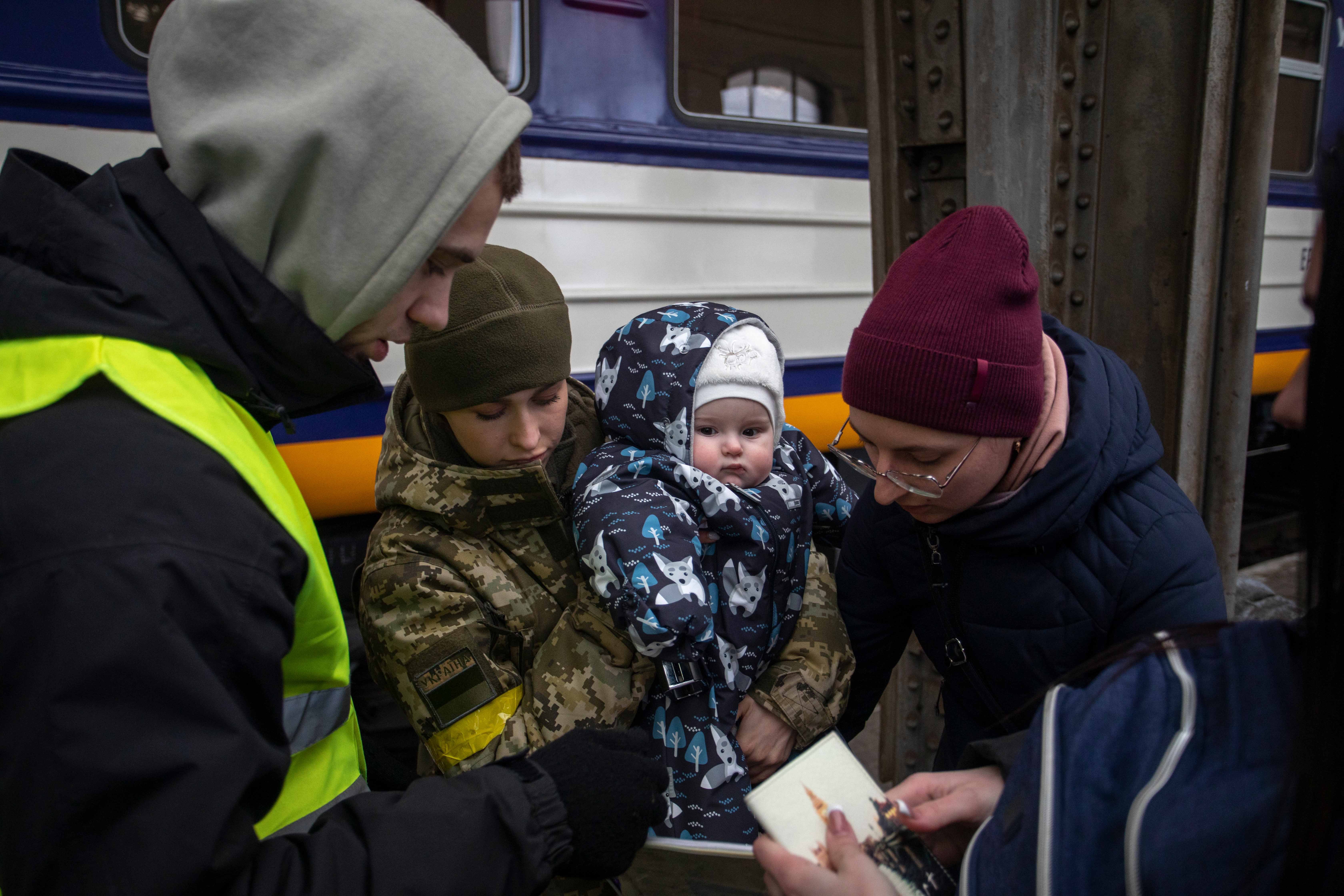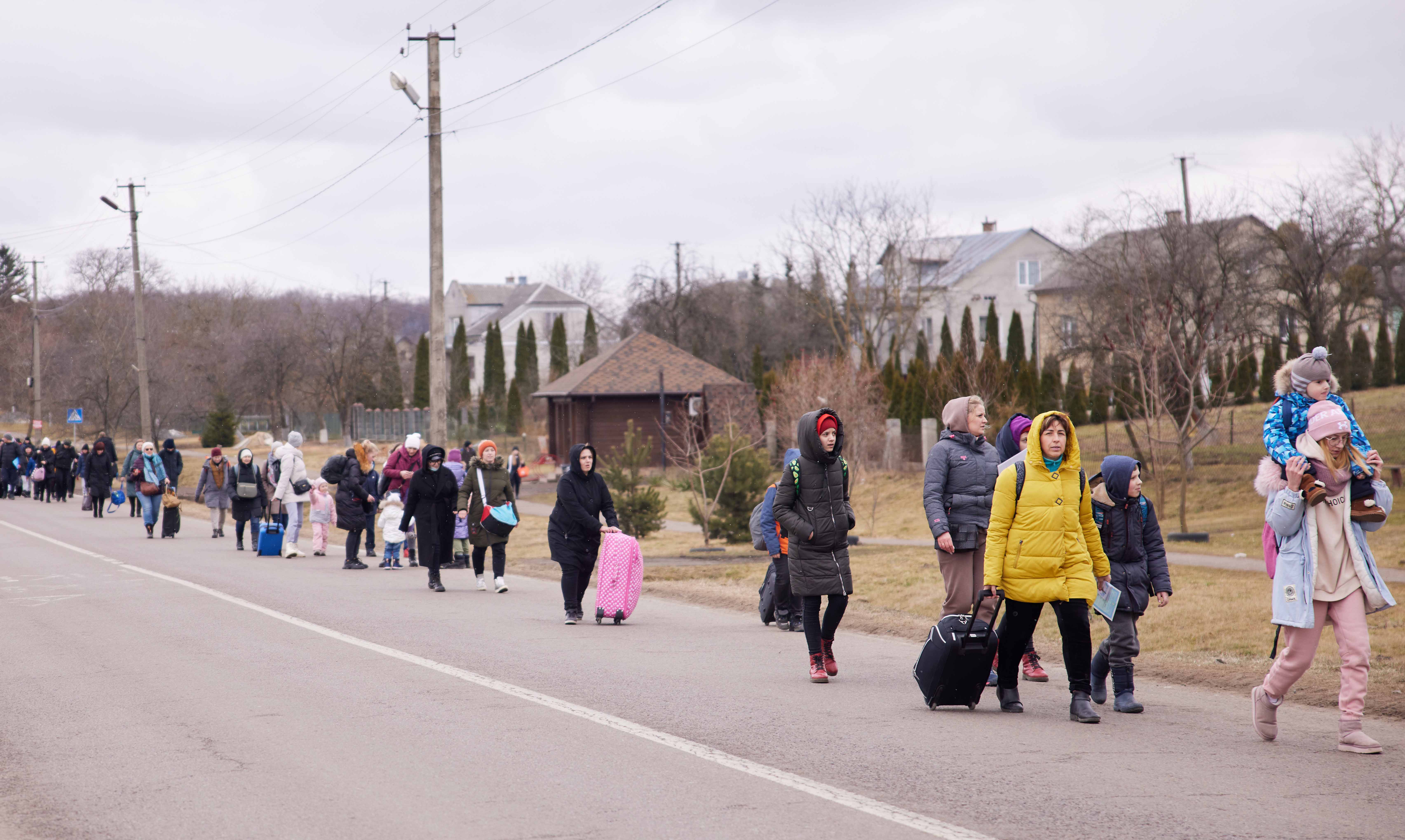Finland responds to Ukraine’s need of humanitarian assistance
Ukraine is Finland’s long-term partner country. Due to Russia’s aggression against Ukraine, Finland grants humanitarian assistance in response to the acute distress and strengthens Ukraine’s sustainability in the midst of the war through development cooperation.

People in Finland are widely moved by the distress of Ukrainians who have fled the war. The Ministry for Foreign Affairs collected answers to the central questions relating to Finland’s additional assistance to Ukraine and the earlier development cooperation between Finland and Ukraine.
How much additional assistance has Finland granted to Ukraine?
In February 2022, Finland granted Ukraine a total of EUR 14 million in additional funding for development cooperation and humanitarian assistance. Of the additional funding for humanitarian purposes, Finland will direct EUR 8.2 million via the UN Refugee Agency (UNHCR) and EUR 3 million via the International Committee of the Red Cross (ICRC). EUR 5.8 million will be channelled to development cooperation under the Partnership Fund for a Resilient Ukraine, which is coordinated by the United Kingdom, and to the Council of Europe’s Action Plan for Ukraine and the OSCE’s project activities.

People walking in Western Ukraine trying to reach the Polish border. Photo: Unicef/Viktor Moskaliuk
What will Finland’s humanitarian assistance be used for?
The humanitarian situation in Ukraine is difficult. The UN estimates that as many as 12 million people will be in need of humanitarian assistance in the next few months. A large part of the population suffers from a lack of water, food and medicines, and people are unable to treat their injuries caused by the war. Those who have fled their homes need protection and emergency accommodation.
Finnish humanitarian assistance delivered via the ICRC is used to help Ukrainians in need of, for example water, food, medicines and medical supplies. The ICRC has a special role in strengthening respect for and implementation of international humanitarian law. It engages in dialogue with the parties to the conflict, reminds them of their responsibility to protect civilians and ensures that civilians are not prevented from accessing basic services. Those who have fled their homes are assisted by the UNHCR, which provides emergency accommodation, protective equipment, food and medicines. Organisations have extensive experience of conflict and crisis situations, which means that they have the capacity to ensure free passage of relief to destinations in the very challenging conditions in Ukraine.
Finland’s support will reach Ukraine also through the core funding granted to UN actors. These organisations include, for example, the UN Office for the Coordination of Humanitarian Affairs (OCHA), the World Food Programme (WFP), which is responsible for food supplies and logistics; the United Nations Children’s Fund (UNICEF), which focuses on assisting children and families; the United Nations Population Fund (UNFPA), which offers reproductive health services; and the United Nations Central Emergency Response Fund (CERF), in which Finland is among the top ten donors.
Finland provides funding for humanitarian purposes in Ukraine also through the EU. The EU is one of the world’s largest donors of humanitarian assistance.

The Unicef representive in Poland, Murat Sahin, is checking the arrived material assistance in Lviv, Western Ukraine. Photo: Unicef/Viktor Moskaliuk
What will the additional development cooperation funding granted by Finland be used for?
The additional exclusive ODA administered by the Foreign Ministry will be channelled to the Partnership Fund for a Resilient Ukraine, which is coordinated by the United Kingdom, to the Council of Europe’s Action Plan for Ukraine, and to the OSCE’s project activities.
In addition to Finland, the Partnership Fund for Resilient Ukraine is funded by the United Kingdom, the United States, Canada, Switzerland and Sweden. The approximately EUR 40 million administered by the fund is used to support Ukraine’s sustainability extensively. Following Russia’s invasion of Ukraine, the fund focuses on such emergency needs in Ukraine as are related to its administration, communities, and communication links. The support will strengthen the ability of the Ukrainian government to coordinate humanitarian and emergency assistance, civil society's capacity to provide necessary services, and the communications opportunities of CSOs, the media and individual journalists. The fund is currently examining which projects would be suitable for support in light of Ukraine’s needs.
The Council of Europe Action Plan for Ukraine supports Ukraine in fulfilling its obligations as a Member State of the Council of Europe and assists the country in implementing the Action Plan in the areas of human rights, the rule of law and democracy. The Council of Europe is currently assessing the reallocation of support so that it would respond to Ukraine’s needs.
Finland has supported the Ukraine Programme of the OSCE High Commissioner for Minorities and projects of such other OSCE organisations as the Office for Democratic Institutions and Human Rights (ODIHR). The OSCE and the Ministry for Foreign Affairs are currently exploring projects that they could support in response to Ukraine’s needs.

Ukrainian hospitals are trying to function during the war. A new born is being taken care of in Kyov on the 3rd of May. Photo: Unicef/Andriy Boiko
Ukraine has been Finland’s partner country also before the war. What kind of development cooperation has Finland conducted in Ukraine?
Finland’s objective is to improve the resilience of Ukrainian society, which refers to its ability to respond to changing situations. Finland gives also long-term support to Ukraine’s structural reforms. The goals of Finland’s Country Strategy for Ukraine are to restore the territorial integrity and sovereignty of Ukraine and to guarantee respect for international law; to strengthen bilateral relations between Finland and Ukraine and to widen the scope of cooperation; to enhance the resilience of society and to improve the living conditions of citizens; as well as to strengthen the relations between the European Union and Ukraine.
Finland’s support to Ukraine in 2014–2021 was EUR 70 million. The additional support will increase the total support to approximately EUR 85 million. Finland has supported Ukraine, among other things, through development cooperation, humanitarian assistance and participation in mine clearance and civilian crisis management. Support has been channelled to various projects, international organisations’ activities and secondment of experts.
The share of development cooperation from Finland’s overall support to Ukraine since 2014 has been approximately EUR 27 million. Finland’s development cooperation helps Ukraine in reforming the basic and vocational education and training, supports the rule of law, and improves the country’s energy efficiency and the use of renewable energy sources. Finland has supported the Council of Europe’s Action Plan for Ukraine; projects carried out by the Organization for Security and Co-operation in Europe OSCE; the Trust Fund for Energy Efficiency of the Nordic Environment Finance Corporation (NEFCO); the Eastern Europe Energy Efficiency and Environment Partnership of the European Bank for Reconstruction and Development (EBRD); the Finnish Meteorological Institute’s meteorology project; and civil society organisations. Plans have been made to start cooperation in the forest sector.
In previous years, Finland’s humanitarian assistance has been channelled to the work of the International Committee of the Red Cross in Eastern Ukraine.
What happens to Finland’s development cooperation during the war?
Due to the war, progress in longer-term development cooperation projects is currently uncertain, and the Ministry for Foreign Affairs is monitoring developments closely. Finland is assessing the consequences of the war on the projects in cooperation with the contractors implementing the projects as well as the preconditions and needs for change.